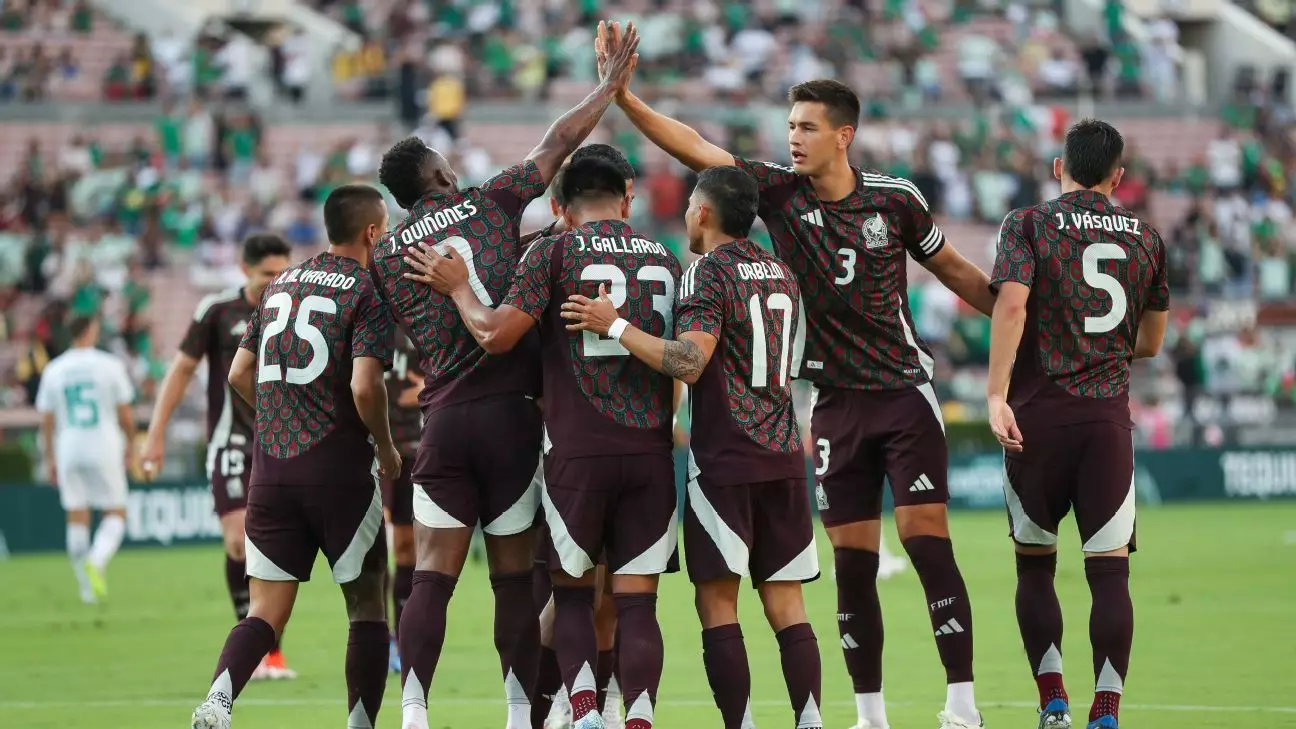Mexican football has recently experienced its fair share of ups and downs, resulting in a fan base that is both passionate and anxious. With the appointment of Javier Aguirre as the new head coach for the Mexican national team, affectionately known as El Tri, there’s a renewed sense of hope. Aguirre’s return—he previously helmed the team in 2001-02 and 2009-10—brings with it an opportunity for rejuvenation after Mexico’s disappointing performance in the 2024 Copa América. Following a solid 3-0 victory against New Zealand and a goalless draw with Canada, the early indications suggest that the new leadership may hold promise.
Aguirre’s approach so far has focused on instilling a competitive spirit among the players, which had been woefully absent during the previous campaign. In both matches, glimpses of tenacity were observed, signaling a shift in mentality, even if the opponents weren’t the strongest.
Critics of the Mexican squad have often cited a lack of cohesion and direction as primary reasons for their failure on the international stage. Aguirre has inherited a team that previously lacked clear tactics, especially evident during their premature exit from Copa América. His early matches have showcased a mix of revitalized aggression—evident from the 13 fouls committed against Canada in the first half—and adaptive strategy. The first half against Canada showcased moments of intensity, but also highlighted areas that need fine-tuning, particularly when comparing the aggressive first half to a more controlled and cohesive second half.
While enthused by the defensive solidity—including impressive performances from players like César Montes and Johan Vásquez—Aguirre recognizes the learning curve involved in developing a coherent playing style. As observed, tactics take time to bed in; however, a more dynamic system appears to be taking shape, contingent upon the players’ attitudes and understanding of Aguirre’s vision.
One of the highlights of Aguirre’s early tenure has been the team’s defensive stability. Against Canada, the team managed to restrict their opponent to an xG (expected goals) of just 0.26. The backline, bolstered by promising figures such as Israel Reyes and Víctor Guzmán, largely stifled the attacking prowess of Canada, who had just come off a strong Copa América showing. It’s essential to credit not just Aguirre but his assistant, the legendary Rafa Márquez, whose defensive acumen serves to strengthen the backline’s effectiveness.
Luis Malagón’s performance in goal also deserves recognition, particularly his ability to preserve a clean sheet against Canada with a crucial save that thwarted a potentially dangerous attack. This fortified defensive display bodes well for Mexico as they aim for qualification in upcoming tournaments and reflects a shift towards a more pragmatic style of play.
While Aguirre’s tactical choices and a hard-working defense are commendable, concern arises regarding the lack of clinical finishing up front. The young forward Santiago Giménez is notably in the eye of scrutiny, having gone without a goal in his last 14 appearances for the national team. Although coach Aguirre has projected confidence in his strikers, it’s hard to ignore that a star forward missing in action can affect team morale.
Giménez’s missed opportunity against Canada could be viewed as a crucial moment, one that might haunt both player and coach as they navigate vital fixtures ahead. His scoring ability will undoubtedly be measured against the expectations placed upon him. As the newly appointed coach states, “I don’t care who scores,” but the reality remains that output from the front lines needs to improve if El Tri aims to compete effectively on the world stage.
Building Fan Support Amidst Hesitance
Despite the promise shown on-field, there remain alarming signs off it. The transition period for new leadership also extends into how fans perceive the team. Attendance figures at recent matches have been far from stellar, signaling a lingering dissatisfaction among supporters following the national team’s earlier shortcomings. Notably, only 25,271 fans turned up in a venue that could hold over 90,000. Even during the subsequent match in Dallas, turnout barely exceeded 30,000.
The attendance issues could be attributed to harsh weather conditions and scheduling challenges, yet they underscore an urgent need for Aguirre to forge a stronger connection with fans. Rallying support can help rejuvenate a once-thriving soccer culture. With a staunch fan base seen as a pulse of the squad, Aguirre’s ability to engage fans could ultimately bolster the team’s journey back to greatness.
While there are signs of life in Aguirre’s early reign, the road ahead remains fraught with challenges. It will take time to incorporate tactical adaptations and rebuild the connection with a disenchanted fan base, yet with unity in vision and performance, the future of El Tri can indeed be bright.


Leave a Reply